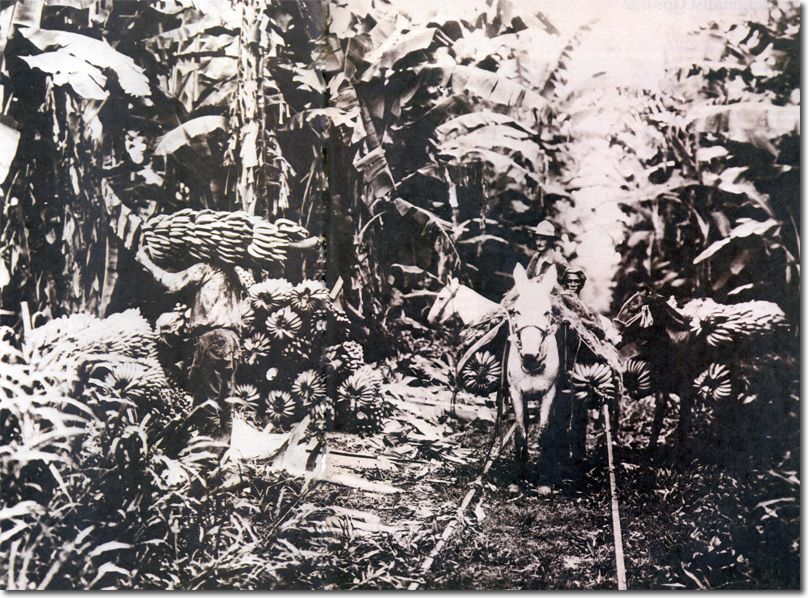|
|


|
|
With the relentless fall in the value of sugar cane, the British authorities encouraged a switch to banana production in an attempt to find an economically viable alternative for the economy of Caribbean islands like Jamaica. This photograph shows early attempts at gathering the heavy crop using humans and animal transportation. Later mechanisation would help increase the agricultural output of the banana plantations.
The Caribbean banana industry owes its origins to the Spaniards who brought the first plants over from the Canary Islands in the 16th Century. But the export trade did not begin until 1868, when an enterprising skipper, sailing from South America to New York, stopped in Jamaica and loaded aboard some bananas grown by, small landowners. It had been only a few years since the Crown first permitted the sale of land to West Indian peasants. Now those who had suffered poverty for so long were presented with a rich and unexpected bonanza. While other islands, still geared entirely' to sugar, faced periods of hardship, Jamaica, turning more and more to bananas, prospered consistently until the Second World War, when shipments to the United Kingdom ceased. With resumed trade after the war, the Windwards also entered the market on a large scale. Though hurricanes, droughts, South American competition, a shortage of investment capital and the drift of labour into tourism all undermined production post-independence. |
Armed Forces | Art and Culture | Articles | Biographies | Colonies | Discussion | Glossary | Home | Library | Links | Map Room | Sources and Media | Science and Technology | Search | Student Zone | Timelines | TV & Film | Wargames